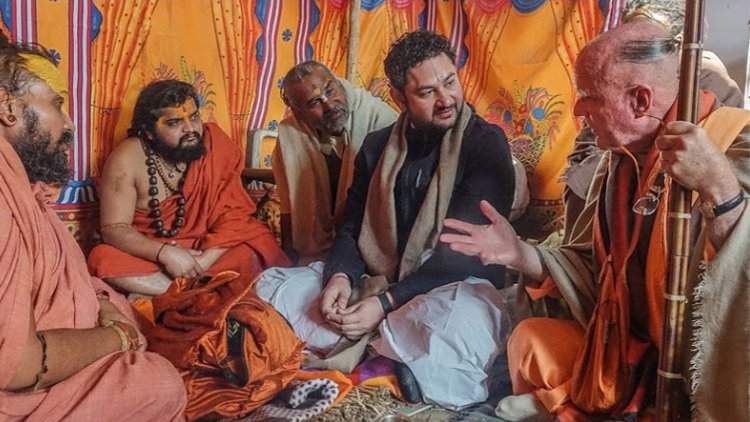https://lh3.googleusercontent.com/xSlzU0FM0pxRtvlr76gZ6GZBEodPlcheBwhjBo8-oC6s8T8cjNQl_QBR8Bcs5dyV67XcfGkSl_DcR-KQCYb7DQqbEcA=s300
0
0
Raja-kumari dasi
https://lh3.googleusercontent.com/xSlzU0FM0pxRtvlr76gZ6GZBEodPlcheBwhjBo8-oC6s8T8cjNQl_QBR8Bcs5dyV67XcfGkSl_DcR-KQCYb7DQqbEcA=s300
Raja-kumari dasi2022-05-29 17:24:252022-05-30 17:51:37Sadhu Sanga Retreat 2022 - Part 1
https://lh3.googleusercontent.com/xSlzU0FM0pxRtvlr76gZ6GZBEodPlcheBwhjBo8-oC6s8T8cjNQl_QBR8Bcs5dyV67XcfGkSl_DcR-KQCYb7DQqbEcA=s300
0
0
Raja-kumari dasi
https://lh3.googleusercontent.com/xSlzU0FM0pxRtvlr76gZ6GZBEodPlcheBwhjBo8-oC6s8T8cjNQl_QBR8Bcs5dyV67XcfGkSl_DcR-KQCYb7DQqbEcA=s300
Raja-kumari dasi2021-06-15 07:40:392021-07-09 06:36:59Лучшая обувь
https://lh3.googleusercontent.com/xSlzU0FM0pxRtvlr76gZ6GZBEodPlcheBwhjBo8-oC6s8T8cjNQl_QBR8Bcs5dyV67XcfGkSl_DcR-KQCYb7DQqbEcA=s300
0
0
Raja-kumari dasi
https://lh3.googleusercontent.com/xSlzU0FM0pxRtvlr76gZ6GZBEodPlcheBwhjBo8-oC6s8T8cjNQl_QBR8Bcs5dyV67XcfGkSl_DcR-KQCYb7DQqbEcA=s300
Raja-kumari dasi2021-05-14 10:12:582021-05-30 07:10:20Про путешествия
https://lh3.googleusercontent.com/xSlzU0FM0pxRtvlr76gZ6GZBEodPlcheBwhjBo8-oC6s8T8cjNQl_QBR8Bcs5dyV67XcfGkSl_DcR-KQCYb7DQqbEcA=s300
0
0
Raja-kumari dasi
https://lh3.googleusercontent.com/xSlzU0FM0pxRtvlr76gZ6GZBEodPlcheBwhjBo8-oC6s8T8cjNQl_QBR8Bcs5dyV67XcfGkSl_DcR-KQCYb7DQqbEcA=s300
Raja-kumari dasi2021-01-04 15:28:502021-03-22 15:37:28Amazon Jungle 1989
https://lh3.googleusercontent.com/xSlzU0FM0pxRtvlr76gZ6GZBEodPlcheBwhjBo8-oC6s8T8cjNQl_QBR8Bcs5dyV67XcfGkSl_DcR-KQCYb7DQqbEcA=s300
0
0
Raja-kumari dasi
https://lh3.googleusercontent.com/xSlzU0FM0pxRtvlr76gZ6GZBEodPlcheBwhjBo8-oC6s8T8cjNQl_QBR8Bcs5dyV67XcfGkSl_DcR-KQCYb7DQqbEcA=s300
Raja-kumari dasi2019-02-26 17:05:312019-03-19 04:51:49“May Mother Ganges Bless You Today”
https://lh3.googleusercontent.com/xSlzU0FM0pxRtvlr76gZ6GZBEodPlcheBwhjBo8-oC6s8T8cjNQl_QBR8Bcs5dyV67XcfGkSl_DcR-KQCYb7DQqbEcA=s300
0
0
Raja-kumari dasi
https://lh3.googleusercontent.com/xSlzU0FM0pxRtvlr76gZ6GZBEodPlcheBwhjBo8-oC6s8T8cjNQl_QBR8Bcs5dyV67XcfGkSl_DcR-KQCYb7DQqbEcA=s300
Raja-kumari dasi2017-12-25 17:33:152018-01-01 17:37:33Christmas In Jaipur
https://lh3.googleusercontent.com/xSlzU0FM0pxRtvlr76gZ6GZBEodPlcheBwhjBo8-oC6s8T8cjNQl_QBR8Bcs5dyV67XcfGkSl_DcR-KQCYb7DQqbEcA=s300
0
0
Raja-kumari dasi
https://lh3.googleusercontent.com/xSlzU0FM0pxRtvlr76gZ6GZBEodPlcheBwhjBo8-oC6s8T8cjNQl_QBR8Bcs5dyV67XcfGkSl_DcR-KQCYb7DQqbEcA=s300
Raja-kumari dasi2017-04-28 07:02:442017-04-29 07:09:11Back In The Motherland
https://lh3.googleusercontent.com/xSlzU0FM0pxRtvlr76gZ6GZBEodPlcheBwhjBo8-oC6s8T8cjNQl_QBR8Bcs5dyV67XcfGkSl_DcR-KQCYb7DQqbEcA=s300
0
0
Raja-kumari dasi
https://lh3.googleusercontent.com/xSlzU0FM0pxRtvlr76gZ6GZBEodPlcheBwhjBo8-oC6s8T8cjNQl_QBR8Bcs5dyV67XcfGkSl_DcR-KQCYb7DQqbEcA=s300
Raja-kumari dasi2017-04-10 12:06:462017-04-14 13:33:21Family United / Дружная семья
https://lh3.googleusercontent.com/xSlzU0FM0pxRtvlr76gZ6GZBEodPlcheBwhjBo8-oC6s8T8cjNQl_QBR8Bcs5dyV67XcfGkSl_DcR-KQCYb7DQqbEcA=s300
0
0
Raja-kumari dasi
https://lh3.googleusercontent.com/xSlzU0FM0pxRtvlr76gZ6GZBEodPlcheBwhjBo8-oC6s8T8cjNQl_QBR8Bcs5dyV67XcfGkSl_DcR-KQCYb7DQqbEcA=s300
Raja-kumari dasi2017-04-08 01:24:012017-04-15 05:13:06Back In Australia / Возвращение в Австралию
https://lh3.googleusercontent.com/xSlzU0FM0pxRtvlr76gZ6GZBEodPlcheBwhjBo8-oC6s8T8cjNQl_QBR8Bcs5dyV67XcfGkSl_DcR-KQCYb7DQqbEcA=s300
0
0
Raja-kumari dasi
https://lh3.googleusercontent.com/xSlzU0FM0pxRtvlr76gZ6GZBEodPlcheBwhjBo8-oC6s8T8cjNQl_QBR8Bcs5dyV67XcfGkSl_DcR-KQCYb7DQqbEcA=s300
Raja-kumari dasi2017-03-04 03:14:452017-03-07 03:25:04A letter of appreciation to the devotees of the Christchurch temple / Признательность преданным из Новозеландского храма
Scroll to top










